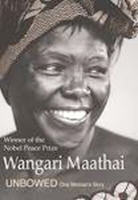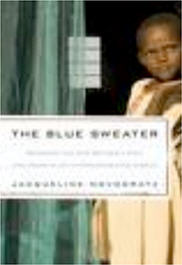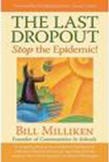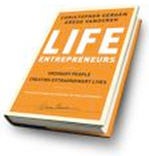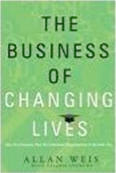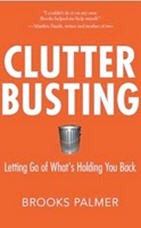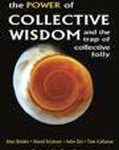
Karen’s Recommended Reading
Raise More Money from Your Business Community
“We don’t have a chance to earn corporate support,” Tony complains, “We don’t have a single corporate headquarters in our region.” If you think like Tony, get ready to change your opinion. No matter if your nonprofit serves in a major city, or rural area without a single corporate headquarters for miles, you can raise funds from businesses. Lysakowski’s book, Raise More Money from Your Business Community, will help you to develop a systematic effort to partner with big and small businesses to raise money to meet your mission and to improve your community.
One extremely valuable area of Raise More Money from Your Business Community is Lysakowski’s common sense suggestions on meeting and interacting with the business community throughout the text. Since getting started is often the most difficult step in fundraising, you will find Lysakowski’s practical, doable advice helpful. She suggests, for example, working with chamber of commences and identifying potential opportunities including “unglamorous partners” like the millionaire who owns the car wash.
This book is excellent for nonprofit organizations that flounder in the business development area and those who believe little is possible, like Tony, whose community offers no corporate headquarters. If your ultimate goal is cause marketing and sponsorships, like the Statute of Liberty-American Express experience, follow Lysakowski’s suggestions to enhance your journey to these kinds of relationships. By interacting with businesses, you will have the opportunity to see new possibilities to enhance your nonprofit, businesses, and your community.
 The Idea Hunter
The Idea Hunter
I’ve been told that I have more ideas about how nonprofits can earn funding than anyone in the world. While no competition has been held to officially award the title, I do love and collect ideas that grow nonprofit organization’s funding and resources. More funding for you translates into better communities for all of us.
If you’re curious about where I get some of my ideas or you want to find more ideas for your nonprofit organization, read The Idea Hunter, by Andy Boynton & Bill Fischer. The Idea Hunter, a quick read, reminds us that:
1) To find ideas, actively hunt for them.
2) Productive hunting requires that you move beyond your regular environment.
3) We need to write ideas down or loose them.
4) While many ideas provide small improvements that don’t solve the Euro crisis or global warming, they are still important. Many improve our lives daily in small, but satisfying ways. Translated into nonprofit funding, idea hunter ideas provide solid, sustainable growth rather than the unexpected and unpredictable million-dollar check.
5) In terms of donors and other funding sources, do not just collect ideas and data, train yourself to notice “incidents and customer service preferences that connect clearly…” (P. 80) with your mission and organization.
For more ideas on how to increase your nonprofit income also read, Don’t Set Resolutions to Increase Your Funding.
The House That Love Built
 Yesterday one of my emails included this quote from Jean Monnet, “Nothing is possible without individuals; nothing is lasting without institutions.” The need for individuals and institutions and the potential conflict between them recapitulates one of the themes in The House That Love Built–the story of Millard and Linda Fuller and Habitat for Humanity.
Yesterday one of my emails included this quote from Jean Monnet, “Nothing is possible without individuals; nothing is lasting without institutions.” The need for individuals and institutions and the potential conflict between them recapitulates one of the themes in The House That Love Built–the story of Millard and Linda Fuller and Habitat for Humanity.
Does it really take individuals? When Fuller was asked about how much money you needed to form a Habitat chapter, he said, “You have to have at least a dollar. It would be fiscally irresponsible to start a project with less than a dollar. But if you have a dollar and you’ve got committed folks you can start and God will bless your meager resources…” Today worldwide Habitat for Humanity and The Fuller Center for Housing, which the Fuller’s began in 2005, have over 1,500 affiliates and partners—while it takes a more than a dollar to sustain them, single dollars created the initial funding and foundations for over 350,000 homes these two organizations have built.
While the book is often a treatise in defense of Fullers, the book’s value for the nonprofit leader is the questions it raises about founders and the institutions they create. Might it have been possible for Habitat and Fuller to reach an accord without the public conflict that took place when the board fired Fuller? What might the Fuller have done differently? The Board? When might those efforts have started? How can a nonprofit organization continue to benefit from the gifts of dynamic founders if and when they come into conflict with organization building? From this example, if you are a board member, what changes will you make at your organization? If you are a founder, how can you help your legacy to continue?
Whatever It Takes
 Cheryl Pollock recommended this book at a collaboration presentation sponsored by the Nonprofit Leadership Center of Tampa Bay late last year. In the presentation, Pollock shared the success of the Y’s Community Learning Center program at Sulfur Springs Elementary School. Before starting the program, after a year of research, the Y selected the Harlem Children’s Zone, discussed in this book, as a model for the Sulfur Springs program. The Harlem Children’s Zone is a community-based program that serves 17,000 children in a 100-block area of Harlem in New York City.
Cheryl Pollock recommended this book at a collaboration presentation sponsored by the Nonprofit Leadership Center of Tampa Bay late last year. In the presentation, Pollock shared the success of the Y’s Community Learning Center program at Sulfur Springs Elementary School. Before starting the program, after a year of research, the Y selected the Harlem Children’s Zone, discussed in this book, as a model for the Sulfur Springs program. The Harlem Children’s Zone is a community-based program that serves 17,000 children in a 100-block area of Harlem in New York City.
Except for the concept of finding board members with extremely deep pockets, you will not find any answers about how to fund your programs. However, if you seek moral support for solving an enduring, multifaceted, challenging problem, which many nonprofit organizations do, or if you wish to help end “the cycle of generational poverty”, Paul Tough’s book will give you insight into the thinking and actions of the Zone’s leader Geoffrey Canada. Along with sharing five years of investigation, the author who is the former editor of the New York Time Magazine, shares history, related research and the background story on recent efforts to end poverty.
Jumping Hurdles: The History of the Schoenbaum Human Service Center of Sarasota
In my hunt for books that tell nonprofit stories, I found this booklet. Dr. Kay Glasser, who died early this year, tells about her magnificent obsession to create a human service center. At the Center she created, non-profits receive “free rent” and those in need receive multiple services.
The booklet’s biggest lesson is to remind nonprofit leaders of the importance of creating by-laws that serve your organization. The Center’s first by-laws called for a board of directors composed solely of representatives of the agencies housed in the Center. This resulted in two challenges. First, board members had the natural tendency to vote in their own agencies interests. Second, according to Dr. Glasser, she had to do the fundraising without board help because they were busy fundraising for their own organizations. Would the Center have been better served by creating a board of influential citizens with agency representatives serving an advisory role?
Dr. Glasser also shares the many other hurdles she overcame in the eight years or so it took to move from concept to grand opening and serving 15+ agencies. Here you can read stories of trying and trying again and finding people willing to help, especially in banks and in city government. Besides the by-laws lesson, the nonprofit leader, in this short read, will be reminded about the value of perseverance, asking for help and asking for money. . .from people who have it.
Banker to the Poor
 Muhammad Yunus’ book traces the start of the now international Grameen (village) micro-lending program in Bangladesh. It has three vital lessons for nonprofit leaders.
Muhammad Yunus’ book traces the start of the now international Grameen (village) micro-lending program in Bangladesh. It has three vital lessons for nonprofit leaders.
1. Never underestimate the value of a small resources in the right place at the right time. The people Yunus started serving with mirco-loans made the equivalent of two cents a day.
2. Never forget your mission. As micro-lending became perceived as successful, Yunus received many opportunities to lend money to people who were poor, but not necessarily the poorest of the poor. Yunus remained focused on his goal to serve the lowest 25 percent of the population.
3. Shape your requests to help donors and others “see” your needs. At one point working with the Central Bank, Yunus sought to develop a housing loan product. The Central Bank declined these since a house constructed from a $125 loan would not add to the country’s housing stock. Next, Yunus requested a “shelter loan.” This too was rejected. Finally, Yunus asked for a “factory loan” since the borrowers worked as entrepreneurs from their homes. With the assistance of the Governor of the Central Bank, Yunus received permission to begin his loan program.
Although they did not start out as a non-profit, Mike Feinberg and Dave Levin’s work resulted in one: the Knowledge is Power Program (KIPP) Foundation. In 1994, Feinberg and Levin, Teach for America graduates, started an inner-city school program for middle school students. Today, 82 schools in 19 states and the District of Columbia are KIPP programs. KIPP serves 21,000 mostly middle school age children. While many KIPP students begin fifth grade at least one or more grades behind their peers in math and reading, after four years at KIPP, 100 percent of eighth-grade classes outperformed their district averages in mathematics and reading based on state tests. Word Hard. Be Nice. tells the story of the early years of KIPP.
What can a nonprofit leader learn from this book? The value of partnerships and perseverance. While the relationships were not always rosy, in fact, they were often difficult and challenging, KIPP had to work with local schools and school boards to succeed. If you are faced with a partnership you must make work, Work Hard. Be Nice. will give you insights about how to survive, grow and thrive in this environment and how to hold on to your vision in tough times.
Three Cups of Tea
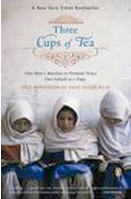 This is a great book to read if you’re involved in the nonprofit sector. First, it will make you feel like your work is not all that difficult compared to Greg Mortenson, who decides to build a school in a rural village in Pakistan. About half way through, as Mortenson begins to develop a series of schools and a nonprofit organization, you will want to go back in time to hand Mortenson your favorite nonprofit fundraising materials and suggest he study it on one of his many long flights to the Orient. Instead, he sends out 500 letters to famous people he does not know and looks for Mr. Wealthy in hopes of funding his nonprofit organization. Finally, you’ll learn how Mortenson and his idea of building many schools for girls in Pakistan comes to life through his perseverance, ethics, hard work and by the good luck he makes by staying in the game. This is a book that affirms that you, too, can achieve your nonprofit mission statement—even if you wisely avoid Mortenson’s specific techniques.
This is a great book to read if you’re involved in the nonprofit sector. First, it will make you feel like your work is not all that difficult compared to Greg Mortenson, who decides to build a school in a rural village in Pakistan. About half way through, as Mortenson begins to develop a series of schools and a nonprofit organization, you will want to go back in time to hand Mortenson your favorite nonprofit fundraising materials and suggest he study it on one of his many long flights to the Orient. Instead, he sends out 500 letters to famous people he does not know and looks for Mr. Wealthy in hopes of funding his nonprofit organization. Finally, you’ll learn how Mortenson and his idea of building many schools for girls in Pakistan comes to life through his perseverance, ethics, hard work and by the good luck he makes by staying in the game. This is a book that affirms that you, too, can achieve your nonprofit mission statement—even if you wisely avoid Mortenson’s specific techniques.
Maathai, the Nobel Peace Prize Winner, via a NGO, plants millions of trees in Kenya and, at the same time, helps maintain democracy in her country –the more challenging, life-threatening, braver of the two feats.
For the nonprofit reader, what is the takeaway?
Her funding model: Women, who stand to benefit the most from trees, are encouraged to create nurseries with gathered native saplings. When these saplings are successfully planted and tended for six months, the women receive the equivalent of 4 cents per tree– enough cash in poor rural areas to motivate the planting of 30 million trees in Kenya.
The Blue Sweater
In her book, The Blue Sweater, Jacqueline Novagratz, founder of the Acumen Fund, traces her journey from banking in Africa to running the Fund. The funding model of Acumen is difficult to emulate – the Rockefeller Foundation (where Novagratz has been a staff member) seeds her with $5 million dollars, and she successfully raises another $3 million –before Acumen has a name. While Novagratz’s funding model is difficult to copy, the power of her relationships is not.
What else is the take away from the nonprofit leader? Her obsession to find and support actions that create real change. This book will give you a healthy restlessness to examine the result of your activities. What are your intended consequences? Are you creating sustainable outcomes? Are people’s lives changed for the better, both immediately as they solve their current issue and long-term? Do they gain skills to solve similar future challenges when they come again? Can you be more effective by slightly or significantly alternating the way you do business? As leaders in the nonprofit world doing good, Novagratz invites us to live in the harder question –are we effective?
Novagratz’s book also supports the work our firm has been doing. Instead of bandaging the symptoms, we’ve been creating donor requests that increase the organization’s capacity to improve people lives long-term. For example, with one client we’re developing a loan pool that provides the nonprofit funding relief and the opportunity for service recipients to help others by long-term recycling of the loan money.
The Last Dropout
Bill Milliken’s book traces the development of the Communities in Schools movement. His funding base is fairly traditional fundraising: corporate sponsors, individuals, government appropriations, etc. The interesting takeaway for nonprofit leaders concerns program strategy and design. Communities in Schools views its work as creating a third side of a triangle of support for children to stay in school and succeed. The first two sides of the triangle are administration and teaching methods. The Communities in School side which completes the triangle is “the coordinated involvement of community members who can meet the nonacademic needs of students…” Milliken points out that when this third side of the triangle is ignored it undermines “. . . the huge and necessary investment we’re making in the other two sides of the triangle.”
Do you look at the services you provide as completing a triangle (or other shape) that bolsters other investments? One recent project I helped design involved setting up services for youth in an Enterprise Zone which as one of its impacts will bolster other “huge and necessary” investments in the Zone. How does your work make the work of others more effective? Are you telling those form whom you seek funding that information? Can you add a service to provide a third side to an existing and wobbly two-sided triangle?
Life Entrepreneurs, Ordinary People Creating Extraordinary Lives
This book’s foundation is from 55 interviews that authors Christopher Gergen and Gregg Vanourek undertake of ordinary people who live extraordinary lives. They define these as people who apply “their vision, talents, creativity and energy not only to their work but to their entire lives—changing their world for themselves and those around them.”
Is it any surprise that a review of the list of those interviewed includes a large number of nonprofit leaders? As a nonprofit leader you’re on the right track–keep up the good work.
The Business of Changing Lives
This is a great read if you’re trying to create nonprofit programming that will appeal to businesses or employ business concepts for sustainability. Author Allan Weis, Internet Pioneer, shares the story of how profits from Advanced Network and Services (ANS), were used to create ThinkQuest, a learning platform that helps students across the globe. Weiss calls it the “Olympics of Web Programming,” see www.thinkquest.org. The text also provides insight into the intent of other ANS grant making and replicable, sustainable program ideas.
This book was a gift from Laura Breeze from the Sarasota Education Foundation. The Foundation supports the TeXellence Program, a recipient of ANS funding. TeXellence provides computers to over 1,000 fourth graders and their low-income families each year. Imagine my surprise when I discovered in the book, that Ron Zimmerman was its founder. At the time, I was taking one of his MAC classes. It is “a small world after all” and we’re all in the business of changing lives.
Clutter Busting
Do you have 97 t-shirts from last year’s walk-a-thon in your attic? Or, 223 cookbooks that a past fundraising committee insisted would fly off the shelves, but now gather dust in your office? How about those 2,712 planned giving brochures you bought because of the volume discount?
Does your organization use clutter to avoid reality?
Brooks Palmer’s new book, Clutter Busting, while aimed at individuals, can help your organization shed items like these in the way of making progress toward achieving your mission.
The Power of Collective Wisdom and the Trap of Collective Folly
The Power of Collective Wisdom is about helping people to create wisdom experiences in groups. This “wisdom is not about just a few wise people but about the capacity of human communities to make wise choices.” For people whose livelihoods involve meetings where people make decisions, like nonprofit boards, The Power of Collective Wisdom is about hope. The first part of the book includes stories and insights about collective wisdom –the places to which we want to guide our most important gatherings.
The second part of the book is about wisdom’s “opposing potential,” collective folly. Here, you will read chilling tales that remind us of times when, either because of polarization or false agreement, folly reigned. “Collective folly,” the authors write, “often has its roots in some of anxiety- ‘crisis’… that induces a movement to separate.” From the Challenger disasters to the facts about how for twenty years hand washing to prevent maternal death in hospitals was not used even though the routine was proven effective, the book’s stories remind us what happens when we fail to listen to wisdom. Given these anxious economic times, we need to pay attention.
The Power of Collective Wisdom is a group product, about groups. It’s a worthwhile read. It will give you words to describe the kinds of groups that you hope to create.
For more answers, check out this Karen’s Nonprofit CEO Library.
For solutions delivered to your inbox, sign up for Karen’s CEO Solutions.
Categories
If you appreciate these Added Value posts, please consider subscribing.
By submitting this form, you are consenting to receive marketing emails from: Karen Eber Davis Consulting. You can revoke your consent to receive emails at any time by using the SafeUnsubscribe® link, found at the bottom of every email. Emails are serviced by Constant Contact
Latest Posts
- From Dream to Reality: The Vision to Action Cycle for Nonprofit Leaders
- Optimize Nonprofit Board Governance: Kickstart Discussions with FRAME
- How CEOs Boost Board Involvement in 15 Minutes a Day
- Transform Toxic Board Behaviors: A Nonprofit CEO’s Guide
- Toxic Nonprofit Board Behavior: How to Expose Hidden Agendas


